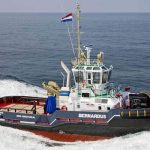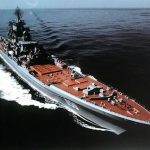Ships need to carry ballast water for stability purposes, and to correct any problem in list, trim, etc. Many species of bacteria, plants, and animals can survive in the ballast water tanks and the sediments carried in ships, even after journeys of several months duration. When these waters are discharged during subsequent loading and discharging operations in the waters of other countries, it may result in the establishment of harmful aquatic organisms and pathogens which pose threats to indigenous human, animal, and plant life and, as a whole, to the marine environment.
This potential of the ballast water to cause harm has been recognized by the World Health Organization, which is worried about the role of ballast water in the spreading of epidemic diseases. This is especially true of ballast taken from developing countries, where hardly any sewage treatment is done and raw sewage as well as industrial wastes find their ways into the seas. Thus, in the view of all these threats, a ballast water management plan has become compulsory on all ships trading worldwide.
This material also is helpful in Chief Engineer license exams or MEO Class I ( Marine Engineer Officer Class I) in India.
Factors in Ballast Water Management Plan
In the preparation of the ballast water management plan the following significant factors should be considered:
· Near coastal organisms released in open seas or mid-ocean do not survive generally, and vice versa.
· Chemical treatment can kill organisms in ballast water. So chemical dosing in ballast tanks is one method.
· Fresh water organisms do not survive in salt water, and vice versa.
· Ballast water over one hundred days old is in a low risk category, as the absence of light, nutrients, and oxygen in the Ballast tanks generally kill the micro-organisms.
· For ships on short voyages and unable to do any ballast water exchange, discharge to reception facilities on shore is another solution.
· New emerging methods like thermal methods, filtration, disinfection, and ultra violet treatment can be considered.
· Ballast water intake should be avoided in the dark or at nighttime as the bottom dwelling organisms rise to the top.
· Ballast water intake should be avoided in shallow water and where the propellers can stir up sediment.
- Ballast water intake should be avoided near sewage and industrial waste outfalls.
- Ballast water intake should be avoided when and where phytoplankton bloom occurs.Ballast intake should be avoided where there is a known outbreak of diseases communicable through ballast water.
Different types of Ballast water exchange
Thus before entering into the waters of any coastal state, ballast water exchange has to be done in mid-ocean or at least 200 nautical miles from shore and at a location where the water depth is at least 200 meters or more. There are three different methods of ballast water exchange:
- Sequential: In this method the ballast tanks are emptied until the ballast pumps lose suction and then the tanks are further stripped by eductor systems. This is followed by taking fresh ballast into the tank.
- Flow through method: In this method water in pumped into the tank and to allow it to overflow through the air vent or dedicated overflow vents. Three times the volume of the tank is to be pumped through to get a 95 percent efficiency of exchange.
- Dilution Method: In this method the tank has two openings; water is pumped in from one opening and flows out through the other.
Ships Operational Procedures
A ballast water management plan stating the relevant International rules and regulations, and duties of personnel and operational procedures should be on board. Also it should mention which method of ballast water exchange is used on board.
When the requirement of ballast water exchange as per the requirements of a coastal state cannot be carried out, then the coastal state authorities should be informed before entering their coastal waters.
A responsible officer has to be designated to look after the operational parts. The Master of the vessel (also known as the Captain of the ship) is overall in charge, whereas the Chief Officer is the operational in charge and responsible officer.
Record Keeping in ballast water management plan
Records of the ballast water exchange are to be entered in the ballast water record book by the responsible officer. The records should contain at the minimum the following information:
- Date
- Geographical location of the ship
- Ship’s tank or Cargo holds used
- Ballast water temperature
- Salinity of ballast water
- Amount of Ballast water loaded or discharged
The location and suitable access points for taking ballast water samples by Port Authorities should be identified in the ballast water management plan. The sampling points should be marked clearly for identification.
Routine cleaning of ballast tanks to remove sediments should be carried out in Dry Dock or in mid-ocean as per the ballast water management plan. All unnecessary discharge of ballast water should be avoided, where possible.
- The article discusses the duties of Chief Engineer in Ballast Water Management . It answers the latest questions on the same topic in the MEO Class I course under DG SHIPPING,MMD.It deals with the technical aspects of Ballast Water Management which all marine engineers should know.
Role of Chief Engineer Officer in implementation of the Ballast Water Management Plan
The operational duties of the ballast water management plan lies with the Chief Officer and the other Deck Officers as calculation and change in stability is an important issue. There have been cases of Pure Car Carrier ships capsizing during Ballast water exchange. The Engineer Officers under the supervision of the Chief Engineer Officer are responsible for the ballast pumping operations. They must have a thorough knowledge of the ship’s ballast tanks and the pumping arrangements. They should be aware of the different time durations required during various types of ballast water exchange operations. The Duty Officer must be informed of all the developments. The Chief Engineer Officer has a duty to guide the Master regarding the technical aspects of all shipboard operations. He can provide a valuable service in the implementation of the Ballast Water Management plan by the following:
- The Chief Engineer Officer must familiarize the Officers and the crew about ballast water management.
- As ballast water exchange timings depends of the calculated capacities of the ballast pumps, the Chief Engineer Officer must ensure that the pumps are maintained properly and operated as per correct procedures.
- The Chief Engineer Officer must make sure that the piping and overflow arrangements of the tanks are in good order and working. An un-vented tank may be subjected to great pressure if the overflow vent is blocked.
Chief Engineers instructions to Duty Engineers
In the sequential method, the ballast tanks are supposed to be run until the pumps lose suction and then stripping arrangements are employed. The Chief Engineer Officer must render full co-operation as it is a critical operation for the pumps. In ballast pumps with gland packing stuffing boxes, the gland packing can overheat due to unavailability of cooling and lubricating water. In ballast pumps with mechanical seals, the mechanical seals can be damaged due to overheating due to a shortage of cooling and lubricating water. The Chief Engineer Officer must instruct all the junior engineers and subordinates regarding the same and ensure compliance while protecting the pumps. Effective look out and watch should be posted near the pumps. The person taking the soundings (Cadets or Duty Able Bodied Seaman or Duty Officer) must take the ballast water tank soundings (level) at a regular basis. The Chief Engineer’s management is critical to this, and also to the following:
- Under and over pressurization of the tanks, pumps, and pipelines are to be avoided, and the Duty Engineer should keep an eye on the suction and discharge pressure of the ballast pumps for any deviations.
- The Chief Engineer must be part of the contingency procedure which has to be deployed due to a failure of the ballast pump, and he must have a standby arrangement ready.
- Chief Engineer should provide an estimated figure of the ballast pump discharge capacity based on machine trial records, maintenance records, conditions, and variables.
- As air pipes are not normally designed for continuous ballast water overflow, the Chief Engineer should instruct the Duty Engineer to watch for any increase in the discharge pressure of the pump or any variation in the amperage of the prime mover motor.
- The Chief Engineer should instruct the Duty Engineer regarding precautions in freezing weather.
- The Chief Engineer must remind the Chief Officer and the Master about the probable change in stability during the Ballast water exchange.
- The Chief Engineer should advise and train the deck crew and the Duty Officer about the methods to ensure that the sounding pipes and air pipes are in good order and the non-return devices in the goose neck air pipes are in working order.
- The Chief Engineer must advice the Chief Officer about the variable timing for ballast water exchange due to variable conditions of loading and the different suction head.
- This section gives a brief outline of a sample ballast water management plan. It is helpful to the candidates appearing in MEO CLASS I exams in India
Sample Ballast Water Management Plan
The outline of a ballast water management plan for guidance is given below:
Introduction: It should contain the information about the relevant conventions.
Ship Particulars: Particulars like length, beam, IMO number, ship’s name, flag, registry, gross tonnage, draft, total ballast capacity, and the international call sign.
Purpose: It should explain the need of ballast water management and importance of correct record keeping.
Plans & drawings of the ballast system: It should consist of ballast tanks arrangement, ballast capacity plan, ballast water piping and pumping arrangement, ballast pump capacities, installed ballast treatment systems etc.
Description of the ballast system: Description of the ballasting and de-ballasting system used on board.
Ballast water sampling points: It should have the list and the location of the sampling points.
Safety restrictions: It should tell about the dangers of enclosed space entries, danger of blocked air vents and other safety instructions.
Description of the methods used on board: It should explain in detail the method of ballast water exchange and treatments (in emergency) used in board.
Methods of communication: It should contain guide lines to communicate with coastal authorities like AQIS in Australia.
Duties of ballast water management officer: It must explain the duties and responsibilities of the ballast water management officer.
Recording requirements: It will explain what all is to be recorded in the log book.
Crew training and familiarization: As this is a new requirement, the crews have to be familiarized about the same by conducting meetings and video screening.
The above is the brief outline of the ballast water management plan. It has to be made ship specific and company specific and approved by the approving authority such as the flag state.
Thus in the view of International guide lines and requirements of all ships plying world wide a ballast water management plan is required to be on board ship. All the Deck and Engineer Officers must be conversant with the plan and their duties there in.



Comments are closed